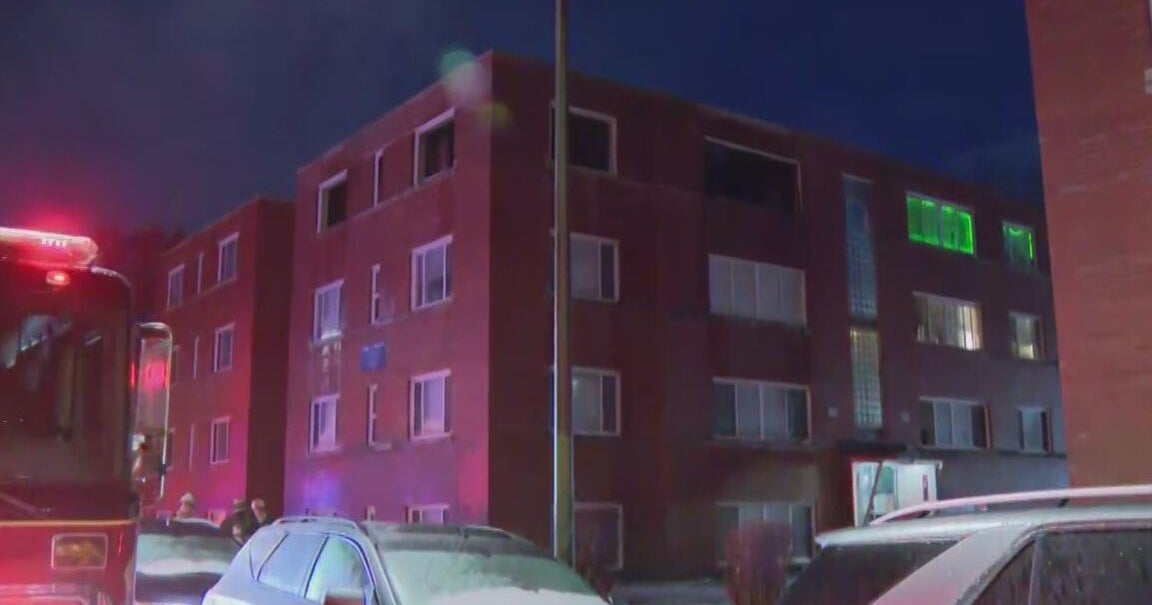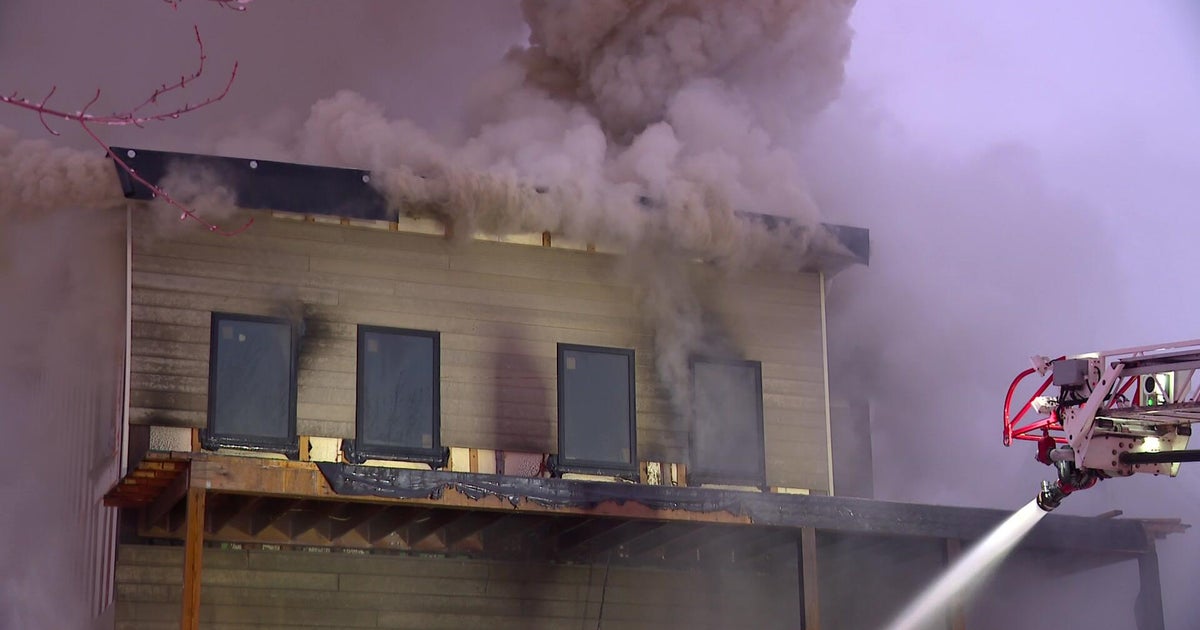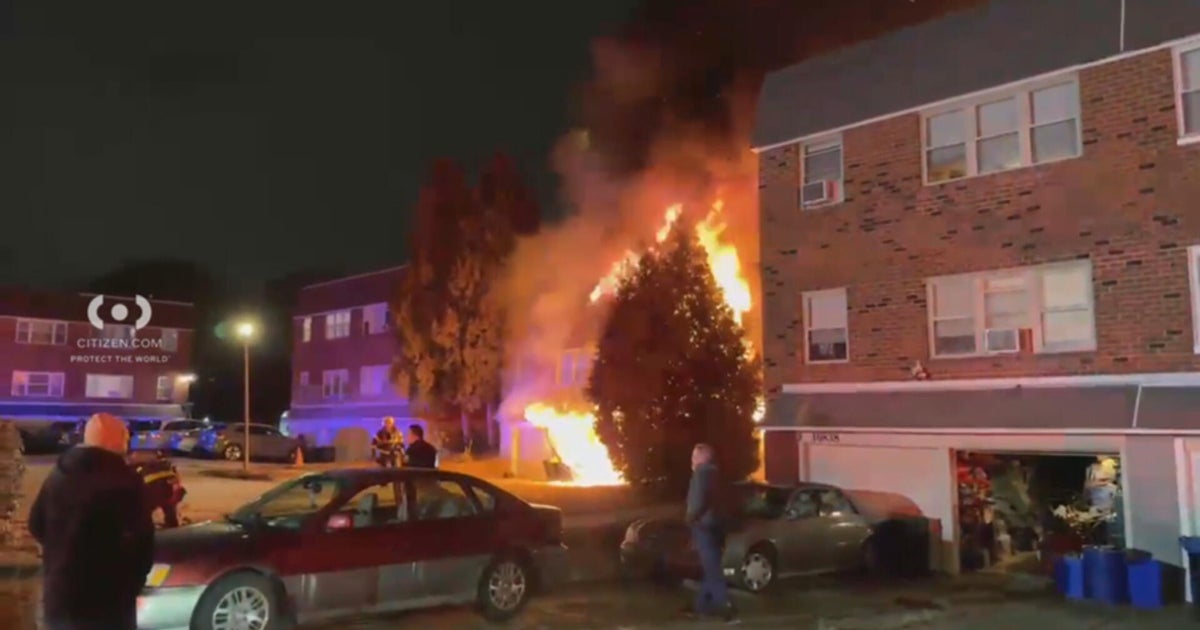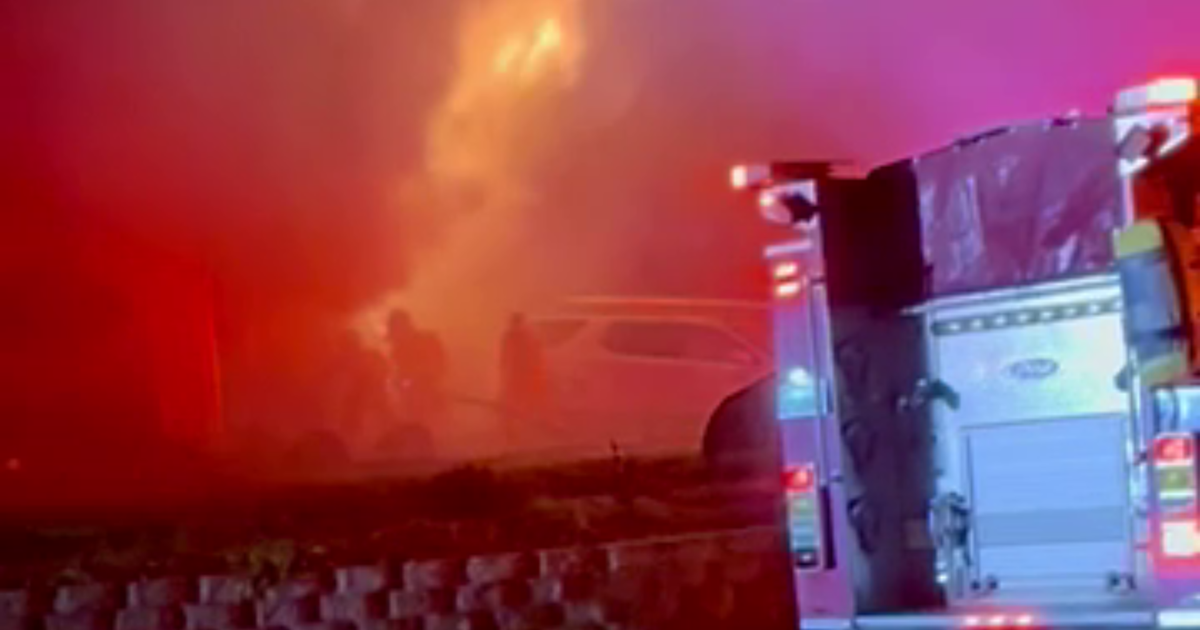Engine Defect Caused American Airlines Fire; Crew Faulted During Evacuation
CHICAGO (CBS) -- An internal defect caused an engine on an American Airlines flight to catch fire while taking off from O'Hare International Airport, the National Transportation Safety Board reported on Tuesday.
The NTSB also found problems with the subsequent evacuation of the aircraft.
American Airlines Flight 383, a Boeing 767 bound for Miami, was taking off on Oct. 28, 2016, when a turbine disk in the right engine failed, sending metal fragments through a fuel tank and wing structure.
The flight crew aborted the takeoff just as the jetliner approached takeoff speed and stopped the airplane on the runway. All 161 passengers and nine crew members evacuated as emergency responders battled the fuel-fed fire. The airplane was damaged beyond repair. One passenger was seriously injured.
The failed turbine disk was recovered in four pieces, one of which weighed 57 pounds and was found more than a half mile from the airplane.
Because of the nature of the defect and the limits of inspection methods, the NTSB concluded the defect was likely undetectable when the disk was produced in 1997.
Twenty other people suffered minor injuries while evacuating and were treated at three different hospitals, officials said at the time. The Chicago Fire Department was on scene within two minutes and quickly extinguished the fire, officials said.
The plane came to a stop about midway down the runway. A Chicago Fire Department official at the time acknowledged that the incident could have become catastrophic if it weren't for the quick actions of the crew and air traffic control.
"The flight crew did an outstanding job of bringing the aircraft to a halt," said Timothy Sampey, the Chicago Fire Department's chief of airport operations.
"There was substantial fuel leak on the aircraft."
Investigators found that defect had been developing microscopic cracks in the disk for as many as 5,700 flight cycles – one takeoff and one landing – prior to the accident.
The disk had been inspected in January 2011.
However, the NTSB said the internal cracks were also most likely undetectable at that time because the current required inspection methods are unable to identify all defects underneath the surface of the disk.
"Even though there have been significant advances in the safety performance of passenger airplanes over the last few decades, this accident shows that there's still improvements that can be made," said NTSB Chairman Robert L. Sumwalt.
However, the NTSB did find fault with some of the actions by the crew.
The NTSB determined the pilots correctly aborted the takeoff and shut down the damaged engine.
The pilots were working with a checklist that didn't differentiate between an engine fire in the air from one on the ground, and the undamaged engine was not immediately shut down.
One passenger was seriously injured while evacuating the airplane, as directed by a flight attendant, and encountering jet blast from the engine that was still running.
The NTSB's report details numerous problems with the evacuation, including a lack of communication between the flight deck and cabin crew, deviation by a flight attendant from emergency evacuation procedures, and the crew's lack of coordination following the evacuation.
The NTSB also noted the flight attendants had difficulty using the aircraft phones to communicate with the cockpit and passengers, and were inadequately trained by American Airlines on the different phone systems installed in its planes.







